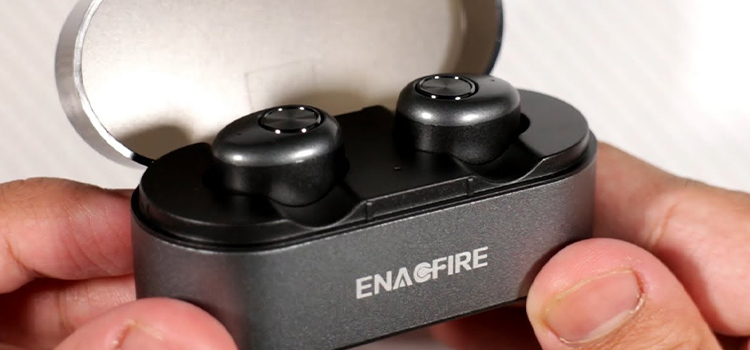Can I Use DDR2 RAM in a DDR3 Motherboard? Know the Facts Completely!
It’s not going to work if you use DDR2 ram on a DDR3 motherboard. DDR2 and DDR3 are incompatible electrically. Not to mention that, while they are both 240-pin connectors, the key slots are in different locations, so the memory will not be physically fit.
Another thing to remember is that the pin placement differs between DDR memory generations. Upgrading to DDR3 will not work unless the motherboard supports both DDR2 and DDR3. If the computer is a desktop, stick with DDR2 unless you intend to upgrade the motherboard.

How RAM Differences Affect Compatibility
The reasons why RAM differences are an important thing to consider are illustrated below.
- The average user should never have to consider which generation of RAM to purchase. Simply let the motherboard/processor you want to buy dictate how much RAM you get. When building a computer today, the latest version of RAM will almost certainly be used.
- You might be wondering how RAM generations affect performance. It won’t make much of a difference for the average user. DDR4 is theoretically faster than DDR3, but RAM speed is rarely the bottleneck in your system. Other upgrades will usually improve your computer’s performance more.
- Swapping an old HDD for an SSD, increasing total RAM, or upgrading your processor will have a far greater impact than slightly faster RAM.
- The main scenario in which RAM complexities matter is in heavy use, such as in servers. These machines are constantly subjected to heavy loads, so every bit of performance is critical.
- Except for RAM generation, it would be difficult to tell the difference between two systems with identical stats in normal use.
Not all RAM is fully compatible with all motherboards. Because motherboards are designed to support only one type of memory, you cannot use SDRAM, DDR, DDR2, DDR3, DDR4, or DDR5 memory on the same motherboard. They will not function and may not even fit in the same sockets.
Considering Factors While Using DDR2 RAM in a DDR3 Motherboard
DDR3 and DDR2 are both 240Pin modules, but their electrical designs, operating voltages, and memory slots differ. As a result, DDR2 and DDR3 cannot coexist on the same motherboard.
The cost and effort required to upgrade the motherboard so you can use DDR3 alongside your existing one. The performance gain may not be significant enough to notice. Because this is a laptop, you will be unable to upgrade the motherboard so you will be limited to DDR2.

Figure- DDR2 and DDR3 Ram.
1. Signal Integrity of DDR2 RAM
Signal integrity is becoming an increasingly important issue as signal speeds for DDR2 RAM increase. DDR2 was the second generation of double-data-rate RAM that provided a significant performance boost.
2. PCB (Printed Circuit Board) Layout
Take precautions to ensure that there are no issues resulting from the signal integrity of the DDR2 RAM chips. Because the PCB tracks react as transmission lines with very high frequencies being carried. To avoid multiple edges caused by reflections, the lines must be kept short and properly terminated.
3. Line directions
The address, clock, and command signals for DDR2 RAM are relatively simple because they are only unidirectional. This simplifies terminating techniques, allowing the lines to be terminated on the circuit board. The data signals and strobe lines, on the other hand, are bidirectional.
The data signals are driven by the memory controller during write operations and by the DDR2 RAM during reading operations. Furthermore, multiple DDR2 RAM chips are linked to the same data and strobe lines. Furthermore, multiple DDR2 RAMs can be found on the same or different DIMMs in a memory system.
4. On-Die Termination
The memory controller hub controls the on-die termination to ensure that the correct system termination is used. The On-Die Termination (ODT) process allows line termination to be much more closely tailored to the actual requirements.
This improves signal integrity and increases voltage margins while decreasing slew rate and overshoot. All of this results in less inter-symbol interference and fewer data errors.
5. Additive Latency
Additive latency is a new feature that has been introduced. This allows the DDR2 RAM controller hub to send read or write commands sooner after the Activate command than was previously possible. This increases memory data throughput.
What Specs of DDR2 RAM Make It Unique for a Dedicated Motherboard
The other specs of DDR2 RAM are provided in the following.
- The main distinction between DDR2 RAM and other DDR RAM sticks is the longer prefetch length. The prefetch length in DDR RAM was two bits per bit in a word, whereas it was four bits in DDR2 RAM. The four-bit deep prefetch queue was read or written with four bits during the access.
- On two data bus clock cycles, the queue received or transmitted data via the data bus (two data bits were transmitted per clock cycle). Because of the increased prefetch length, DDR2 RAM was able to double the rate at which data was transferred.
- The DDR2 RAM design avoided an excessive increase in power consumption. DDR2 RAM’s bus frequency has increased due to advancements in electrical interfaces, on-chip termination, prefetch buffers, and off-chip drivers.
- However, as a trade-off, the latency of DDR2 RAM will significantly increase. The DDR2 prefetch buffer has a depth of 4 bits, while DDR has a depth of 2 bits.
- Although DDR SDRAM (Synchronous dynamic random-access memory) typically has a read latency of 2 to 3 bus cycles, DDR2 read latency can range from 3 to 9 cycles. The typical range, however, is 4 to 6. To achieve the same latency, DDR2 RAM must run at twice the data rate.
Then, Can a DDR3 Motherboard Support DDR2 Ram
NO. The reasons are illustrated below:
- To begin with, forcing it into the slot may cause damage to the slot.
- Second, you can’t because the pin count is different.
- The third issue is that the physical layout is different and will not fit in.
In short, DDR3 RAM will not function on a DDR2 motherboard.
Are DDR3 and DDR2 the same?
DDR2 and DDR3 are RAM (Random Access Memory) types. DDR RAM has a transfer rate of 1600 MB/s, DDR2 RAM has a transfer rate of 3200 MB/s, and DDR3 RAM has a transfer rate of 6400 MB/s. The following are the key distinctions between DDR2 and DDR3.
Subscribe to our newsletter
& plug into
the world of technology




